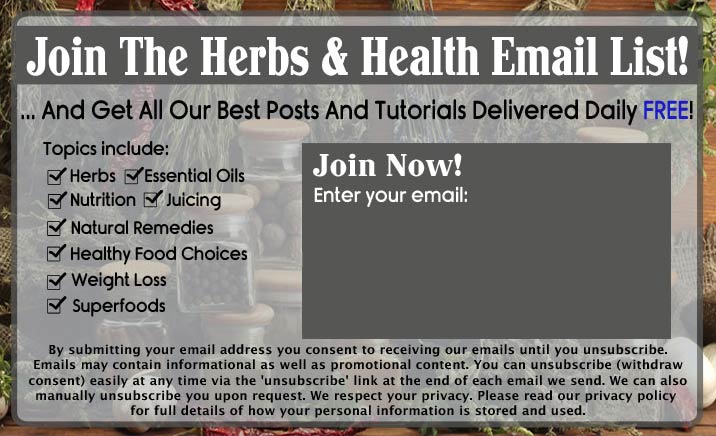
Graphic © herbshealthhappiness.com
Cysteine is a polar amino acid that is involved in the maintenance of stability among extracellular proteins and can react with itself to form an oxidized dimer. It is chemically distinct from other amino acids in that aside from methionine, it is the only amino acid to contain sulfur as part of its structure. [1] Our bodies can naturally synthesize cysteine from methionine via the transsulfuration pathway through homocysteine, and thus often, cysteine is considered as a nonessential amino acid under normal physiological conditions; in some individuals however such as infants, elderly, and patients suffering from malabsorption syndromes or metabolic disorders, cysteine may be regarded as essential.
Cysteine can act as a neurotransmitter wherein it depolarizes neuronal membranes. [2]
Cysteine as an Antioxidant
Cysteine possesses as a side chain a thiol, which often takes part in various enzymatic reactions, and because this highly reactive thiol undergoes redox reactions, cysteine has antioxidant properties in nature and can lessen oxidative stress. Cysteine serves as the rate-limiting substrate for the synthesis of intracellular glutathione, which diminishes lipid peroxidation of cellular membranes and other targets where oxidative stress is known to occur. Being a thiol antioxidant, cysteine also protects cells from probable death induced by glutamate. [2] In the 2011 review of published findings by McPherson and Hardy on the use of dietary cysteine in relation to disease outcomes, the potential of cysteine to ward off and mitigate chronic inflammation by enhancing an individual’s antioxidant status has been proposed. Furthermore, enteral or parenteral nutrition supplemented with cysteine has been demonstrated to decrease cysteine metabolism and increase glutathione synthesis among critically ill patients, addressing the increased demand for this sulfur-containing amino acid during stressful conditions and inflammatory states. [3]
Cysteine and Cancer
Because cysteine is the precursor of the potent antioxidant glutathione, which stands as one of the most valuable detoxifying agents of carcinogens and is the most effective defense against oxidative DNA damage through scavenging of reactive oxygen species and free radicals, this amino acid plays an important role when it comes to deterring tumor development and cancer growth. Additionally, cysteine, as well as its derivatives, also regulates immune responses mediated by T-cells by encouraging DNA synthesis of various cycling T-cell clones and triggering the activation of cytotoxic T cells. A prospective nested case-control study of 32826 women (of which 735 incident cases of carcinoma in situ and invasive cancer were identified) was conducted by Zhang et al. (2003) to evaluate the relation between plasma total cysteine concentrations and subsequent breast cancer risk. In this study, higher total concentrations of cysteine circulating in the plasma were significantly associated with a lower risk of breast cancer in analyses controlling for matching factors; such association was dose-dependent, with women belonging to the highest quintile achieving an approximately 50% lower breast cancer risk. The results from this case-control study indicate the potential chemopreventive role of cysteine against breast cancer. [4]
High cysteine is also associated with a decreased risk of colorectal cancer. Age-adjusted analyses from the nested case-control study of Miller et al. (2013) indicated an absence of colorectal cancer risk with increasing cysteine quartile against proximal distal, local/regional, and metastatic tumors. However, multivariate analyses from this study suggested a significant association between cysteine and rectal tumors and localized tumors and a borderline significant association between this amino acid and proximal colorectal tumors. [5]
N-acetyl-L-cysteine, a derivative of cysteine, has been evidenced to be of immense potential in cancer treatment due to its anticarcinogenic and antimutagenic properties. This antioxidant triggers an early and continuous increase in the expression of tumor necrosis factor (TNF)-a on peripheral blood T cells and increases the concentrations of membrane TNF-RI and TNF-RII on tumoral cell lines and on T cells after stimulation. In more than a third of the mice injected with L1210 lymphoma cells in the study of Delneste et al. (1997), the appearance of tumors was observed to have been inhibited by oral N-acetyl-L-cysteine administration in vivo. [6]
Cysteine and Athletic Performance
As mentioned previously, glutathione combats oxidative stress and, by extension, oxidative stress-induced muscle fatigue related to strenuous muscular contraction. Increasing intracellular glutathione levels through cysteine supplementation continues to appear as an attractive strategy, and in the study of Lands, Grey, and Smountas (1999), prolonged supplementation of a whey-based cysteine product (at a dose of 20 g/day) augmented antioxidant defenses and improved muscular performance of young adults enrolled in the trial. The intake of the said cysteine product led to a 35.5% increase in glutathione concentrations in circulating lymphocytes, with observations of supplemented subjects being able to generate more power to execute more moderate-to-vigorous work and self-reports from subjects feeling more energetic. [7]
References:
[1] Cysteine C (Cys). The Biology Project, Department of Biochemistry and Molecular Biophysics, University of Arizona. https://biology.arizona.edu/biochemistry/problem_sets/aa/Cysteine.html
[2] Atmaca G. (2004). Antioxidant effects of sulfur-containing amino acids. Yonsei Medical Journal. 45(5): 776-788. https://pubmed.ncbi.nlm.nih.gov/15515186
[3] McPherson R. A., Hardy G. (2011). Clinical and nutritional benefits of cysteine-enriched protein supplements. Current Opinion in Clinical Nutrition and Metabolic Care. 14(6): 562-568. doi: 10.1097/MCO.0b013e32834c1780. https://pubmed.ncbi.nlm.nih.gov/21986479
[4] Zhang S. M. et al. (2003). A prospective study of plasma total cysteine and risk of breast cancer. Cancer Epidemiology, Biomarkers & Prevention. 12(11 Pt 1): 1188-1193. https://pubmed.ncbi.nlm.nih.gov/14652279
[5] Miller J. W. et al. (2013). Homocysteine, cysteine, and risk of incident colorectal cancer in the Women’s Health Initiative observational cohort. The American Journal of Clinical Nutrition. 97(4): 827-834. doi: 10.3945/ajcn.112.049932. https://ajcn.nutrition.org/content/97/4/827.full
[6] Delneste Y., Jeannin P., Potier L., Romero P., Bonnefoy J. Y. (1997). N-acetyl-L-cysteine exhibits antitumoral activity by increasing tumor necrosis factor a-dependent t-cell cytotoxicity. Blood. 90(3): 1124-1132. https://bloodjournal.org/content/90/3/1124?sso-checked=true
[7] Lands L. C., Grey V. L., Smountas A. A. (1999). Effect of supplementation with a cysteine donor on muscular performance. Journal of Applied Physiology. 87(4): 1381-1385. https://pubmed.ncbi.nlm.nih.gov/10517767
★ Get My Books - 100% FREE:
😳 Tinnitus And Brain Health?
After 47 years of studies and countless brain scans done on more than 2,400 tinnitus patients, scientists at the MIT Institute found that in a shocking 96% of cases, tinnitus was actually shrinking their brain cells.
As it turns out, tinnitus and brain health are strongly linked.
Even more interesting: The reason why top army officials are not deaf after decades of hearing machine guns, bombs going off and helicopter noises…
Is because they are using something called "the wire method", a simple protocol inspired by a classified surgery on deaf people from the 1950s...
★ How To Get Rid Of Nail Fungus:
★ Does Your Salad Contain This Vegetable?
★ 20 Natural Painkillers In Your Kitchen (Video):
★ Men's Prostate Health:

2. Famous Chef Sheds 60lbs Researching New Paleo Recipes: Get The Cookbook FREE Here
3. #1 muscle that eliminates joint and back pain, anxiety and looking fat
4. 7 odd foods that KILL your abdominal fat (surprising fat-fighters)
5. The TRUTH about bread (Will surprise you!)
6. [PROOF] Reverse Diabetes with a "Pancreas Jumpstart"
7. Here's What Happens When You "Unlock Your Hip Flexors"
8. The #1 WORST food that CAUSES Faster Aging (beware -- Are you eating this?)
The #1 Muscle That Eliminates Joint And Back Pain, Anxiety And Looking Fat
By Mike Westerdal CPT
Can you guess which muscle in your body is the #1 muscle that eliminates joint and back pain, anxiety and looking fat?
This is especially important if you spend a significant amount of time sitting every day (I do, and this really affects me in a big way!)
Working this "hidden survival muscle" that most people are simply not training because no-one ever taught them how will boost your body shape, energy levels, immune system, sexual function, strength and athletic performance when unlocked.
If this "hidden" most powerful primal muscle is healthy, we are healthy.
Is it...
a) Abs
b) Chest
c) Glutes
d) Hip Flexors
Take the quiz above and see if you got the correct answer!
P.S. Make sure you check out this page to get to know the 10 simple moves that will bring vitality back into your life:
If you enjoyed this page:














